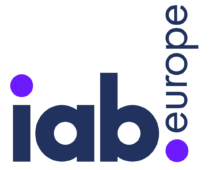Playing Cupid with Chatbots & Image Recognition
by Lindsay Rowntree on 1st Feb 2017 in News

Not long ago, brands would not have believed they would need to consider chatbots as part of their marketing strategy; but with their exponential growth and with messaging apps entrenched within our daily lives, such is the world we now inhabit. Ed Preedy (pictured below), MD for Europe, GumGum, explains to ExchangeWire how image recognition can take chatbot marketing to a whole new level.
Chatbots are by no means a new phenomenon. But when Facebook opened their Messenger platform to third-party developers, it caused quite the stir. Brands rushed to get their hands on their own slice of the chatbot pie; 33,000 brands were using Facebook’s Messenger platform by November, and 80% of all businesses polled expect to be chatbot-enabled by 2020.
Marketers are hastily assembling to make sense of how to harness them as they excite over the possibility of tapping into the estimated 900 million active users. One area they should be exploring if they want their brands’ chatbots to be genuinely useful and responsive to consumers is image recognition, an essential building block in the chatbot evolution.
Developers are already playing around with this possibility, including WTFIT, whose chatbot interprets the contents of images it receives. Google also launched their Allo messaging app to much fanfare, incorporating image-recognition technology into apps to create contextually-relevant text-based, ‘smart replies’.
But brands can go much further than this.

Ed Preedy, MD for Europe, GumGum
Brands with image recognition-enabled chatbots can explore the possibility of receiving consumers’ images, whose contents will be analysed by sophisticated AI algorithms, and then return contextually-relevant messages in real-time in a language consumers now speak: images. Why is this important?
Sharing photos is very common in person-to-person interactions – the meteoric rise of image-first social platforms like Snapchat, Pinterest, and Instagram is testament to that. As GumGum’s recent poll into social media consumer behaviour showed, users on social media are turning to such platforms for a sense of community, and they prefer content to be original and authentic, rather than reposted.
Image recognition offers brands the exciting opportunity to imitate this interaction on a brand-consumer level in their chatbots and deepen those all-important brand-consumer conversations and sense of community. Such is the potential here that 44% of American consumers polled preferred interacting with chatbots over humans in their customer relations. This is even before the full roll-out of chatbots imitating the increasingly image-first human conversation has materialised – the future only looks bright.
Then there’s big data. Big data is invaluable for marketers to gain insight into what consumers are drawn to first, what they search for, and what they, ultimately, end up buying based on those searches. This big data is then used to ensure the right conversations, at the right time, are being broached with the consumer.
With the power of image recognition, though, a seamless connection is bridged between big data gleaned from the three billion images shared or posted online daily and chatbots themselves. Using those complex image-recognition algorithms, marketers will be able to further refine those image-based messages, grounded on the interactions the consumer has with them via the smartphone-based chatbot.
This smartphone point is an important one. Consumers are increasingly mobile-centric, with a smartphone UK penetration rate of 81% – rising to 91% for those aged 18-44 years old. Moreover, 31% of smartphone users make no traditional voice calls in a week – up from 4% in 2012 – showing a clear consumer trend towards using alternative means of communication as they’ve become more readily available, such as text- or image-based messages.
Smartphones are part of this pivotal momentum towards a truly image-first web, and messaging apps are continuing to drive this forward. This lays the essential bedrock on which chatbots and image recognition can flourish together as a marketing match made in heaven.
The potential of this marriage, however, goes beyond the realms of marketing, for example into healthcare, where Babylon Health’s chatbot allows receipt of images from users to help detect health symptoms. Image-recognition-led chatbots, like these and the ones being explored by marketers, are exploiting the opportunity to provide a function useful to the everyday user.
AI can spot trends, identify patterns and, therefore, personalise content at a faster and more accurate level that humans can only dream of. So why not play cupid and marry your image-recognition-led marketing strategy with the huge opportunity that image-recognition-led chatbots can offer to your chatbot marketing strategy?








Follow ExchangeWire